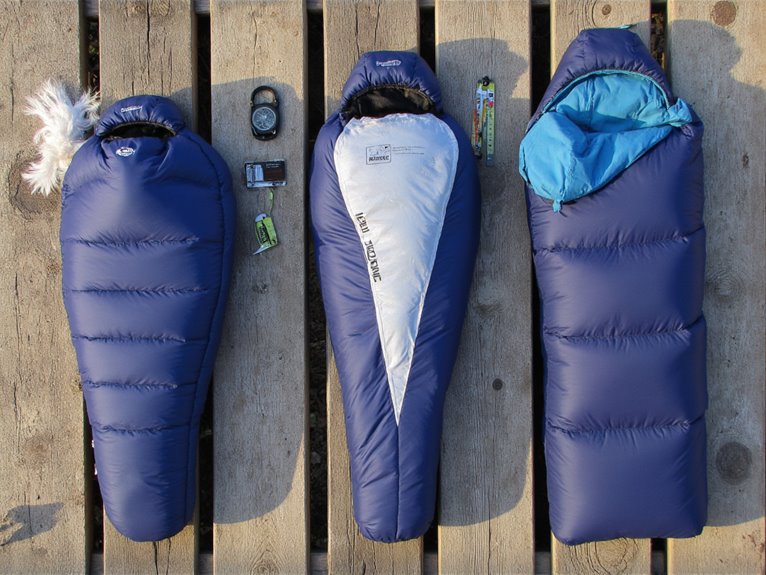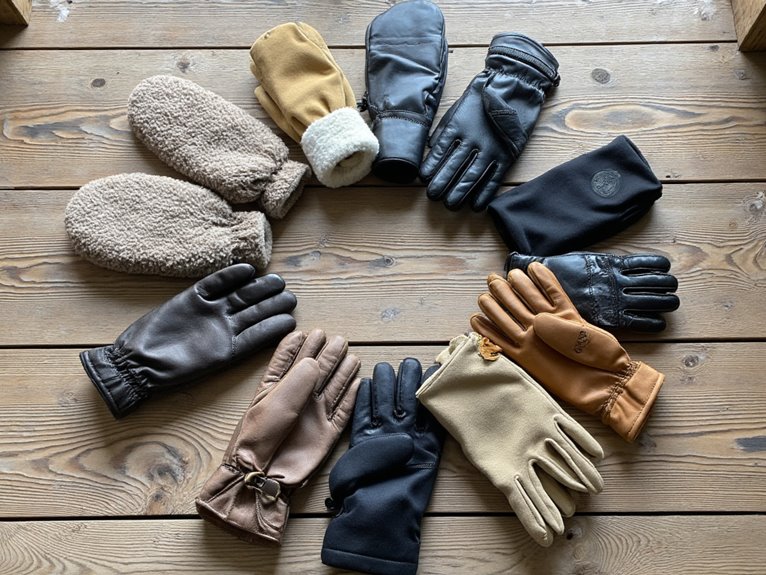What Is the Best Material for a Brick Oven?
When building a brick oven, the right material can make all the difference. For withstanding scorching temperatures, refractory materials like firebrick, ceramic blankets, and refractory concrete are top contenders. Firebrick, in particular, impresses with its high-temperature resistance, thermal shock durability, and insulation performance. However, insulation is also essential, and options like refractory blankets, ceramic fiber boards, and vermiculite guarantee heat retention and energy efficiency. The best material for your brick oven will depend on your cooking style, desired flavor profile, and energy efficiency goals. Identify the perfect blend of heat, flavor, and efficiency that suits your culinary needs.
We are supported by our audience. When you purchase through links on our site, we may earn an affiliate commission, at no extra cost for you. Learn more. Last update on 1st January 2026 / Images from Amazon Product Advertising API.
Refractory Materials for High Heat
In the context of building a brick oven, refractory materials that can withstand scorching temperatures are the only way to go, as they can take the heat and keep on ticking.
When we're talking brick oven building, we're not messing around – we need materials that can handle the intense heat without crumbling under pressure.
Firebrick, ceramic blankets, and refractory concrete are top contenders for withstanding the fiery furnace-like conditions within your oven.
These materials are specifically designed to resist thermal shock, ensuring your oven remains structurally sound even when the temperature soars.
Insulation Options for Efficiency
Efficient insulation is the secret ingredient that turns a good brick oven into a great one, allowing you to achieve perfect puffs of crispy crust and tender centers with minimal fuel consumption.
A well-insulated oven guarantees that heat is retained, reducing energy loss and cooking time.
Popular insulation options include refractory blankets, ceramic fiber boards, and vermiculite.
Refractory blankets provide excellent thermal insulation and are easy to install. Ceramic fiber boards offer superior heat resistance and durability. Vermiculite, a natural insulator, is an eco-friendly choice.
When selecting an insulation material, consider factors like R-value, durability, and ease of installation.
Firebrick Pros and Cons
In the realm of building a brick oven, firebrick is often the material of choice, but is it the perfect fit for your culinary creation?
Let's weigh the pros and cons, starting with its impressive high-temperature resistance, thermal shock durability, and insulation performance – the holy trinity of brick oven necessities.
High Temperature Resistance
Thermal resilience is the ultimate litmus test for any brick oven material, and firebrick's exceptional high-temperature resistance is a significant advantage in this regard.
Capable of withstanding scorching temperatures above 1000°C (1832°F), firebrick guarantees that your brick oven remains structurally sound even in the most intense heat.
This remarkable thermal tolerance allows for uninterrupted cooking sessions, as you can crank up the heat without worrying about material degradation.
In contrast, inferior materials might crack or disintegrate under similar conditions, rendering them unfit for brick oven construction.
Firebrick's high-temperature resistance is a vital factor in its popularity among brick oven enthusiasts, certifying a durable and reliable cooking experience.
Thermal Shock Durability
Firebrick's ability to withstand extreme temperatures is only half the battle, as its capacity to absorb and recover from sudden and drastic temperature fluctuations is equally vital in ensuring the structural integrity of your brick oven.
This is where thermal shock durability comes in – the firebrick's ability to withstand thermal stress without cracking or shattering. A firebrick that can't handle thermal shock will eventually crack, compromising your oven's structure.
The following factors are essential:
Thermal conductivity: How efficiently the firebrick can absorb and distribute heat.
Coefficient of thermal expansion: How much the firebrick expands and contracts with temperature changes.
Thermal diffusivity: How quickly the firebrick can absorb and release heat.
Fracture toughness: The firebrick's ability to resist cracking under thermal stress.
Insulation Performance
Beyond its thermal durability, a brick oven's performance is heavily reliant on the firebrick's insulation capabilities, which profoundly impact the overall cooking experience.
A well-insulated oven facilitates consistent temperatures, reduced heat loss, and a more efficient cooking process.
Firebrick's insulation performance is critical, as it directly affects the cooking time, flavor, and texture of your culinary creations.
High-quality firebrick materials like refractory ceramic or high-alumina brick offer exceptional insulation properties, allowing for precise temperature control and even heat distribution.
This means you can achieve that perfect Neapolitan-style pizza crust or slow-cook a tender, fall-off-the-bone BBQ brisket with ease.
Ceramic Blankets for Even Heating
By wrapping their brick ovens in ceramic blankets, pizzaiolos and home cooks alike can achieve a more uniform heat distribution, a key factor in producing perfectly cooked crusts and delicious, smoky flavors. This clever technique is a game-changer for achieving that perfect Neapolitan-style pizza.
Energy efficiency: Reduce heat loss and save on fuel costs.
Faster heat-up times: Get cooking sooner with rapid heat distribution.
Improved temperature control: Maintain a consistent temperature for perfect cooking.
Easy maintenance: Ceramic blankets are easy to clean and maintain.
Vermiculite Insulation Benefits
When it comes to building a brick oven, vermiculite insulation is a top contender for maintaining optimal temperatures and minimizing heat loss.
But what makes it so effective?
It has impressive thermal shock resistance, high-temperature endurance, and low thermal conductivity, making it a top choice for brick oven construction.
These properties allow vermiculite insulation to effectively maintain the high temperatures needed for cooking, while also ensuring that the oven's internal temperature remains consistent.
In addition, vermiculite insulation is also extremely durable, with a long lifespan that can withstand the repeated heating and cooling cycles that brick ovens are subjected to.
Thermal Shock Resistance
Thermal shock resistance, a critical consideration in brick oven construction, is where vermiculite insulation truly shines, thanks to its remarkable ability to withstand extreme temperature fluctuations.
This means that vermiculite can handle the intense heat of a brick oven without compromising its structural integrity.
But what exactly makes vermiculite so resilient?
Low thermal conductivity: Vermiculite has a low thermal conductivity, which means it can absorb and distribute heat slowly, reducing thermal shock.
High thermal mass: Vermiculite has a high thermal mass, allowing it to absorb and release heat energy gradually.
Flexible structure: Vermiculite's unique structure allows it to expand and contract with temperature changes, reducing the risk of cracking or damage.
Chemical inertness: Vermiculite is chemically inert, meaning it won't react with other materials or undergo degradation due to temperature fluctuations.
High-Temperature Endurance
Vermiculite insulation's ability to withstand extreme temperatures is further underscored by its remarkable high-temperature endurance, making it an ideal choice for brick oven construction where intense heat is a constant presence.
This is vital, as brick ovens can reach scorching temperatures of up to 500°C (932°F) during cooking.
Vermiculite's high-temperature endurance guarantees that it can maintain its structural integrity even in the face of such extreme heat.
This means that vermiculite-insulated brick ovens can operate safely and efficiently, without compromising on performance or risking damage to the oven's internal components.
Low Thermal Conductivity
In addition to its impressive high-temperature endurance, vermiculite insulation also boasts remarkably low thermal conductivity, which substantially reduces heat transfer and maintains that the brick oven's internal temperature remains consistent and well-controlled.
This means that the heat generated by the oven is retained, allowing for efficient cooking and reduced energy consumption.
Energy Efficiency: Reduced heat transfer means less energy is wasted, saving you money on your utility bills.
Consistent Cooking: A consistent internal temperature guarantees that your dishes are cooked to perfection every time.
Safety: Low thermal conductivity reduces the risk of burns and other accidents caused by excessive heat radiation.
Longer Oven Life: By reducing heat stress, vermiculite insulation helps prolong the lifespan of your brick oven.
Refractory Cement for Durability
Refractory cement, a specialized mixture of aggregate and binding agents, serves as the backbone of a brick oven's durability, withstanding scorching temperatures and intense heat fluctuations.
This remarkable material is the unsung hero of brick oven construction, allowing the oven to maintain its shape and structure even in the face of extreme heat.
By providing a strong bond between the bricks, refractory cement guarantees the oven's integrity, preventing cracks and damage from thermal shock.
With its impressive heat resistance and durability, refractory cement is an essential component of a brick oven, allowing it to withstand the high temperatures required for perfect pizza crusts and crispy bread.
Material Considerations for Flavor
As we strengthen the structural integrity of our brick oven with refractory cement, we must also consider the materials that will impart flavors to our culinary creations, a critical aspect often overlooked in the pursuit of the perfect pie. The materials we choose can greatly impact the flavor profiles of our dishes, making this decision a crucial one.
- Firebrick: Imparts a subtle, smoky flavor to dishes.
- Clay: Adds a hint of earthiness to cooking.
- Ceramic: Provides a neutral flavor profile, ideal for delicate dishes.
- Insulation: Prevents flavor-killing temperature fluctuations.



